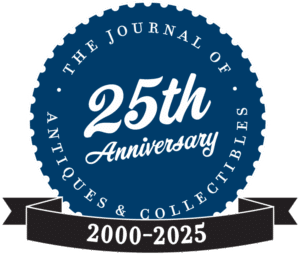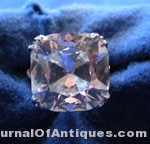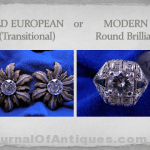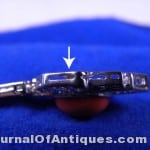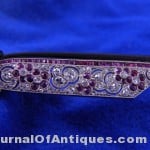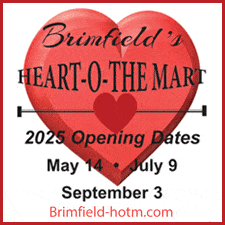Antique and Estate Jewelry; Its Time Has Come
Antique and Estate Jewelry; Its Time Has Come
By Edward Lewand, GG, ASA, AAA


This article covers an overview of periods, trends, markets and identification. I hope it will give you the insight on how to examine a piece and research its value. Be sure to view the transaction from both sides of the deal. Remember that because of the resources available on the internet, both you and your client can find similar pieces online and see what they are selling for. Believe it or not, eBay has a tremendous listing for antique and estate jewelry. One can even research on other auction sites to see what similar items might have sold for. The internet can also help you find the right market for your item. The trick with the internet is typing in the right keywords. Also don’t be so fast to buy subscriptions to sites that offer auction results, they may not have everything and most of the time, if you spend a few minutes searching, you can get the results you need directly from the auction sites yourself. Watch for an upcoming article on internet research in a future issue of The Journal of Antiques and Collectibles.
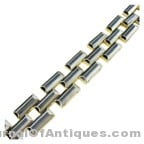
Another thing to note are the many different markets offering antique and estate jewelry. Making sure the item is priced accurately and placed in the appropriate market is very important so one can obtain the best price for the item. There is a common principle in valuation theory that an item in the wrong market will reflect that market’s price. A simple example: if we took a Tiffany & Co. brooch and placed it in a flea market it would bring a lower price: where as if we took a common brooch and placed it in a Fifth Avenue jewelry store in New York it would bring a higher price. So finding the right market for yourself or your client is very important. You don’t want to take a fine diamond necklace that is signed and place it in a local auction without large exposure and sell it for $50,000 and have your client find the necklace two weeks later in a Christie’s auction where it brought $200,000. Would you be liable? Could the smaller auction house be liable? Aren’t you both supposed to be professionals so this could be something a court might have to decide? In brokering or advising a client, check various resources and do the required research. Jewelry is a specialty item and a professional independent appraiser should be consulted. Be sure to check their background and make sure they are up-to-date on the current antique and estate jewelry market. Another rule is to check the various markets yourself by getting several offers from reputable dealers (I usually recommend three offers). If they are legitimate offers then they will be there while you shop for others. Don’t let anyone pressure you by saying if you leave the offer is no good.

Auction catalogs can also be a wealth of knowledge and learning how auctions work is very important; do they pay referral fees, what commissions they take, etc. They are also a great resource for pricing. Keep in mind, if a price is too high when compared to similar sales, find out why. Additional research might be needed; was the item sold to the public or a dealer? Some items, when sold at a wholesale level, are priced depending on results, such as large diamonds, and fine colored stones.
Developing relationships with dealers is very important. Many dealers will give you estimates based on a photo and gemological information. Also a note that gemologists from the GIA (Gemological Institute of America) are not appraisers, the GIA teaches no appraisal theory. Find someone who is a certified appraiser from one of the major appraisal organizations who is also a member of the Appraisal Foundation. Checking facts and doing your own research is very important. You should even be checking other’s information for accuracy and making sure you understand the market.
Art historians who understand and study jewelry are also very helpful in the identification of periods; what styles were used during a certain period and what materials were or were not used. They can tell you why and what the item might represent. As a professional appraiser I use several art historians as consultants and they have saved me both time and embarrassment.
Overview of the more common periods
One of the important things regarding antique jewelry is having the knowledge of the periods and motifs. Knowing the different periods requires education and learning over time. A library of books is very helpful to the identification of style and motifs, but taking hands-on classes and attending antique shows to see the jewelry first hand is also important for research and in the development of a network of contacts for sale or purchase.
The following is just an overview. Check with an expert to see if the items are actually period or if they are reproductions. I will be pointing out some indications of reproductions but nothing is as valuable as experience and study. For the purposes of this article we will start with the Georgian period. In the early days when England ruled and had providences all over the world periods were done by the reigning monarch – Georgian, Victorian and Edwardian. After these periods, the style of the times was used – Art Deco and Retro. Following are brief descriptions of the periods and photos. More details of the periods will be covered in future articles.
Georgian – 1710s-1830s

Victorian – 1830s to 1900s
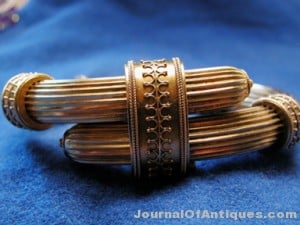
Art Nouveau – 1890 – 1914

Edwardian – 1901-1910

Art Deco – 1920-1939
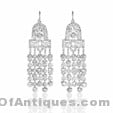
Retro – 1935-1950
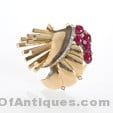
Other periods are Arts & Crafts and the 1950s and mid-20th century. These will be covered in future articles. One other interesting fact that should be noted is that white gold was developed around 1915 or so, to be used in place of platinum (cost and war effort). White gold does not occur in nature it is done my mixing alloys with the gold to give it a whitish color.
Hallmarks and Trademarks

Diamonds
(See my prior article in the May 2013 issue of this publication for pricing information.)
There is so much to cover when discussing antique jewelry. One thing to consider is the cut of the diamonds. Old mine-cut diamonds were cushion shape in general or followed the outline of the rough diamond. It wasn’t until the late 1800s, during the industrial revolution, that diamonds become round “old European Cuts.” After 1917, the proportions of the modern diamond were developed. The older style cut diamonds are very popular today and are being cut again and used. Left is a photo of a cushion-shaped diamond.
Pricing gold
(See my prior article in the March 2013 issue of this publication on how to figure the price of gold.)
Gold does play a factor in determining price… but the style, period and design are, in some cases, just as important.
Keep in mind that trying to reproduce antique and period jewelry can cost more than what the actual piece might be selling for today. Also a reproduction piece might not be made by hand or constructed the same. Below is a photo (A) of the back of a piece of deco jewelry. The arrow points to where the under-gallery is attached, you can see the solder mark. This is an indication that the piece could be period. If the piece was of a solid casting it would be questionable as to if the piece is actually from the Deco period (I would say it was a repro). Photo (B) shows a solid cast piece. Also if the piece had modern cut diamonds, its authenticity would be questionable too.
Other things to keep in mind: platinum was not really used until 1900. You might see pieces with platinum over gold but a simple test can identify that. Also, the layer of gold will be thicker. In silver-over-gold pieces, the gold was a thin layer backing.
Another very important feature to remember is that the back of fine jewelry is finished usually as fine as the front.
Learning periods, styles and construction are all important to understanding antique and estate jewelry. How to price and understand the market is learned by doing. If you’re selling retail, the more research and romance you can give to the easier the sale, but remember to double check your facts because the public can and will be checking the internet too. If you’re a private collector check your facts before you sell or buy something.
Another new trend that is happening is divesting; people over 65 are starting to sell off their assets that the kids might not want or are converting them into cash so they can enjoy life. They are looking for expert advice. If you are considering doing this, check out the consultant you are hiring and do your research as I have mentioned.
Edward Lewand, GG, ASA, AAA. Private independent Appraiser, Consultant Appraisal Service, LLC., New York and Georgia. He is also an Instructor at New York University School of Continuing and Professional Studies “The Art of Jewelry Appraising”.
Mr. Lewand along with his wife Sandy are the directors’ of the “Antique Jewelry and Art Conference, Inc.” known As “Jewelry Camp” www.Jewelrycamp.org now in its 37th year in New York and Atlanta a conference of lectures and hands-on sessions pertaining to antique, estate and costume jewelry.
Please feel free to email me with comments, questions or concerns ealcas@msn.com
Or visit me at www.ConsultantAppraisalService.com or at www.jewelrycamp.org
